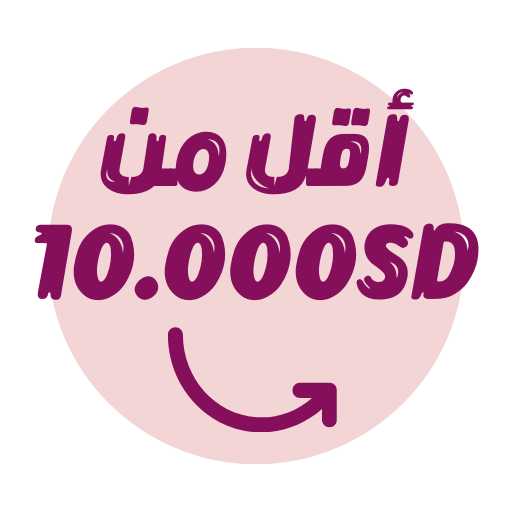How agentic AI will transform mobile apps and field operations
Every time-management expert we spoke with told us that the act of choosing what to work on and when to work on it helps people get their most important work done. You also can use AI insights to identify what resonates with your audience, and then craft stories that highlight your brand’s values and mission. Combining AI’s efficiency with human creativity allows you to build stronger connections and foster genuine engagement.
How to Build an AI Voice Receptionist for Appointment Booking and More
Over that time, I’ve tested a wide range of productivity software, including once reviewing more than 50 project-management apps for a single guide. Each morning, Sunsama displays tasks synced from a variety of software, alongside your calendar and unfinished tasks from yesterday. It prompts you to prioritize today’s work and to link tasks to your objectives—your largest goals for the week. Sunsama then schedules tasks logically into your next available time slot, intelligently rescheduling them when other tasks run into overtime.
Predictive Maintenance With IoT and AI Enhances Equipment Reliability in Manufacturing
Technology leaders should also review their architecture and assess their technical debt and readiness for integrating AI capabilities. Recent research shows that 92% of manufacturers say outdated infrastructure critically hinders their generative AI initiatives, and fewer than half have conducted a full-scale infrastructure readiness assessment. Our journalists combine independent research with (occasionally) over-the-top testing so you can make quick and confident buying decisions. Whether it’s finding great products or discovering helpful advice, we’ll help you get it right (the first time). Structured, for example, estimates an “energy level” for how much effort a task requires. But in my experience, it listed going for a run (something that I find gives me mental energy) as high-energy, while listing a two-hour writing sprint (a task much more likely to leave me feeling drained) as low-energy.
How mobile AI agents will redefine the user experience
Repetitive tasks like data entry, documentation, and scheduling often consume significant time. AI excels at automating these processes, freeing up professionals to focus on strategic decision-making. These tools ensure compliance with building codes and standards while reducing the likelihood of costly rework. For building owners managing complex or multi-site projects, AI offers consistent oversight, helping maintain quality and regulatory compliance without stretching resources.
How CodeRabbit brings AI to code reviews
- The most promising opportunities should simplify work for field engineers while allowing them to deliver more value to customers.
- Instead, when planning your day, you hover your mouse over a task and then press X on your keyboard to prompt Sunsama to schedule it in the next available slot.
- Let’s explore how your business can use AI-powered tools to execute profitable marketing strategies in 2025.
- And if you don’t find time to get to a task four days in a row, it moves the task to your Archive—suggesting that the task may not be a core priority.
- It even turned the agenda into a CSV file that I could import into a to-do list app.
- From recognizing returning patients to seamlessly booking appointments, these AI systems are designed to lighten the load on human staff while delivering a top-notch customer experience.
It should keep you more focused on work and allow you to worry less about tasks falling through the cracks. That’s another core feature that could make this category of apps worth considering. Again, you could approximate something similar by setting up automations to add each new event from one calendar to another. You can also do this natively in Google Calendar and other calendar apps, with separate calendars for personal and work tasks that combine into a unified agenda. Having your calendars automatically synced, though, is a cheat code for people who juggle multiple calendar ecosystems.
For instance, GPT-4 Real-Time offers advanced features like nuanced speech recognition and emotional understanding but comes at a higher price compared to simpler models like GPT-4 Mini Real-Time. Additionally, real-time APIs support multilingual capabilities, allowing businesses to cater to a diverse customer base. This adaptability is particularly useful in industries like healthcare, where clear communication is essential.
As you can guess from the name, the tool is designed to do a thorough search on the web for information related to your query, then present a detailed report to your specifications. Other use cases focus on the need for speed and the impact of making the wrong decisions. These agents require comprehensive knowledge bases and testing to ensure that they lead to valid and better decision-making.
- And it can automatically add gaps between tasks for a buffer to catch your breath.
- Personal calendars and to-do lists vie with work calendars and project-management apps for priority.
- If you check off a task earlier than expected, if tasks take longer than anticipated, or if something comes up and you schedule a new task on top of an existing task’s time, Sunsama adjusts your task schedules as appropriate.
- However, AI-powered tools like Notion can help you organize and surface relevant information from your notes.
- AI’s ability to process large datasets, predict outcomes and automate repetitive tasks can revolutionize project management, offering solutions to some of the most persistent challenges in the built environment.
Reclaim AI took less time to set up than other tools, and its meeting-booking tool—something that typically requires at least a few clicks in other apps—required zero additional setup. In some ways, it comes across like a simpler, more corporate-friendly take on Sunsama. After you categorize tasks and add categorized timeblocks to your day, Morgen’s AI slots them in. It can import tasks from other apps, it includes a Calendly-style tool to book meetings, and it has a workflow tool to sync events between calendars or add buffers between tasks.
The app reminds you throughout the day when it’s time to go to a meeting or when you should take a quick break. And when you’re done for the day, it prompts you to write a journal entry about what you accomplished. This app uses just a dash of AI—to estimate task duration, auto-file tasks into projects, and schedule them on your next open slot—but shines by making you think through what’s most important to accomplish today. From there, we were able to identify opportunities to optimize existing content and uncover content gaps where we could create new, valuable content.
Starting a research project
It’s also expensive in comparison with traditional to-do list apps, at $20 per month. For that investment, you get a calmer, journal-focused take on task management that won us over in testing—even as we concluded that AI-powered task scheduling is not the best option for most people today. Instead of attempting to automate everything, it helps you approach work more mindfully and prevents critical work from falling through the cracks. Motion automatically schedules tasks around gaps in your workday, based on task priority, and it does that well. It reorders your schedule if you change a task’s priority or when meetings are added to your calendar, too. We liked its timezone feature, which allows you to see the time in two places on your calendar, as well as its tool to clear out your schedule for the day.
 Accessories | اكسسورات
Accessories | اكسسورات Babies | اطفال
Babies | اطفال Body care | العناية بالجسم
Body care | العناية بالجسم Collections | مجموعات
Collections | مجموعات Face care | العناية بالوجة
Face care | العناية بالوجة Hair Care | العناية بالشعر
Hair Care | العناية بالشعر Makeup | مكياج
Makeup | مكياج Perfume | العطور
Perfume | العطور Deodorant | مضادات للتعرق
Deodorant | مضادات للتعرق For Men | للرجال
For Men | للرجال Personal Care | العناية الشخصية
Personal Care | العناية الشخصية Sale | تخفيضات
Sale | تخفيضات New proudcts | منتجات جديدة
New proudcts | منتجات جديدة under 10000SD | اقل من 10.000ج.س
under 10000SD | اقل من 10.000ج.س Made in Sudan | منتجات سودانية
Made in Sudan | منتجات سودانية
No comment